The China – Pakistan border at the Khunjerab Pass
Pakistan’s border with China is one of the highest paved roads in the world, attracting a steady stream of Pakistani travellers who want to escape the city.
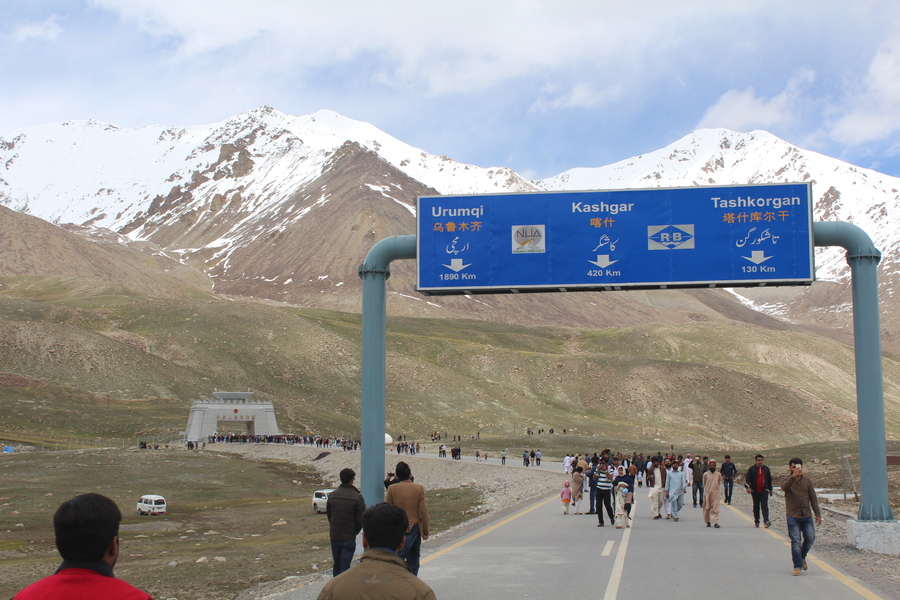
Visually the border isn’t a particularly arresting sight; a faux Great Wall of China-esque arch heralds the entry to the world’s most populous nation. The surrounding mountains are not particularly spectacular, and the countryside is the kind of stunted grass and occasional shrub which typically grow at high altitudes. If the view doesn’t take your breath away the altitude certainly will; it’s 4,700 metres above sea level.
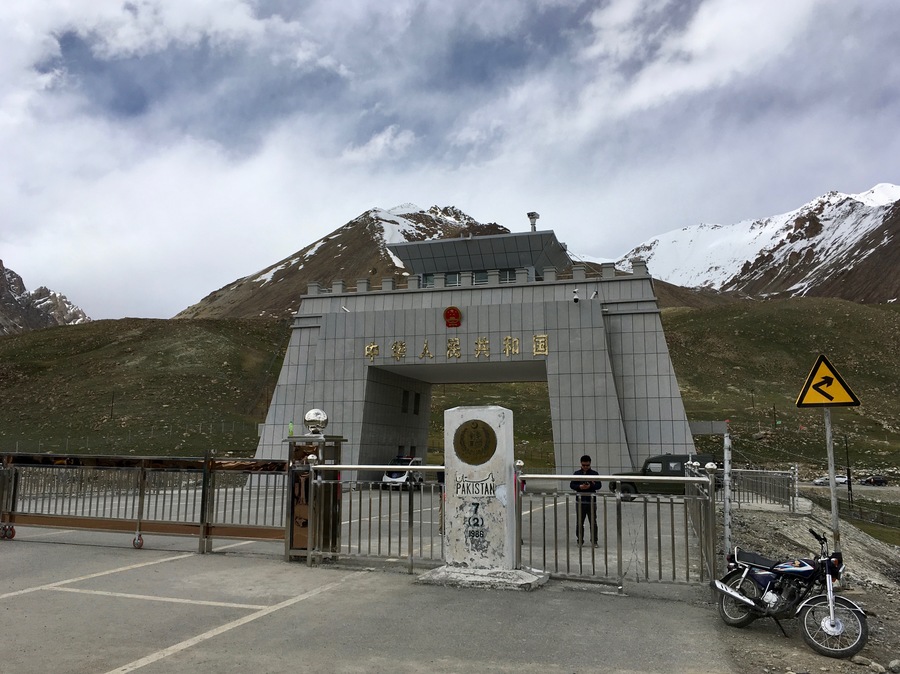
The border is more significant for what it represents; here you are standing at the top of Pakistan, not just in the mountains, but on the top of the nation’s crown; it’s all downhill from here to the Arabian Sea at Karachi. It’s a cultural watershed, a place where two vastly different cultures meet; quite literally just a stone’s throw away everything changes; the official language from Urdu to Mandarin, the culture from South Asian to Central and East Asian, the civilisation from Islamic to Sinic, the driving from the left to right side of the road. A few metres over there, you won’t see shalwar kameez and dupattas, only the heavy fabrics of the Uyghurs and the adventure chic preferred by active members of the Chinese upper classes. On the other side of the arch there is a notable presence of women and alcohol in public compared to Pakistan, while travellers heading the other way notice the sudden profusion of minarets and spicy aromas wafting from bazaars.
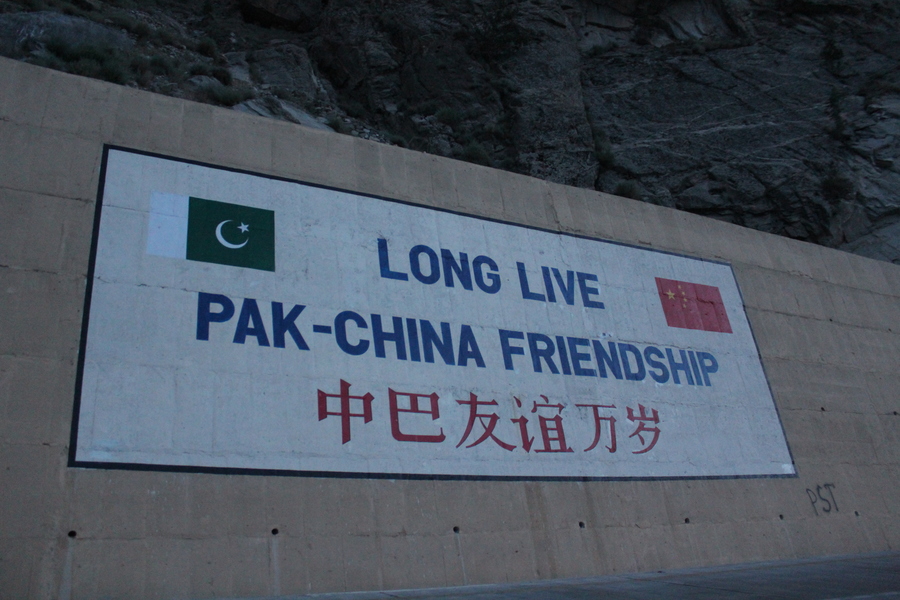
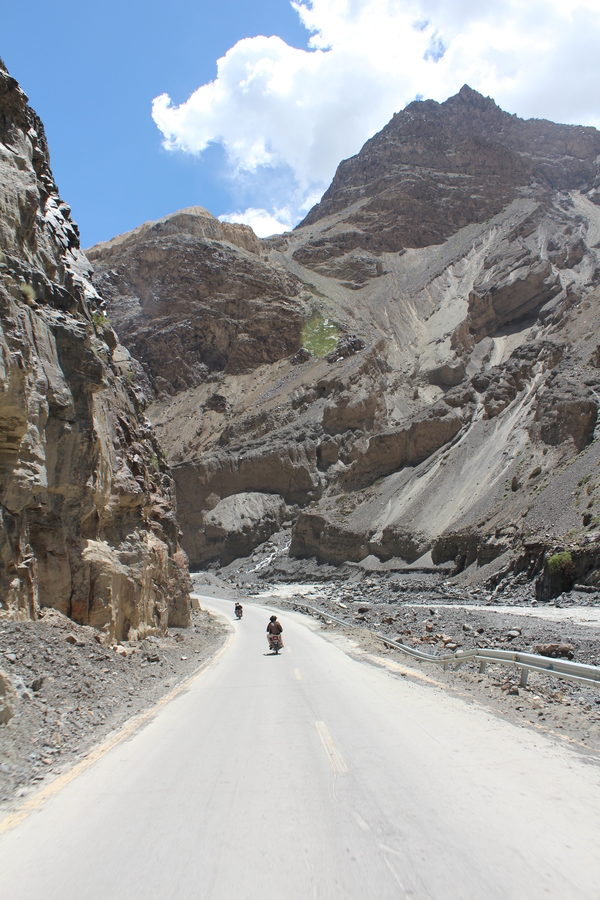
Riding towards the border on the Karakoram Highway
It’s also the climax of the 1,300 kilometre-long journey along the Karakoram Highway, from Islamabad in the south to Kashgar in China’s Xinjiang province. Around 1,000 workers, Pakistanis and Chinese, lost their lives while constructing the highway between 1959 and 1979. Today, it links communities along the way in places like Passu, Hunza, Abbottabad and Tashkurgan.
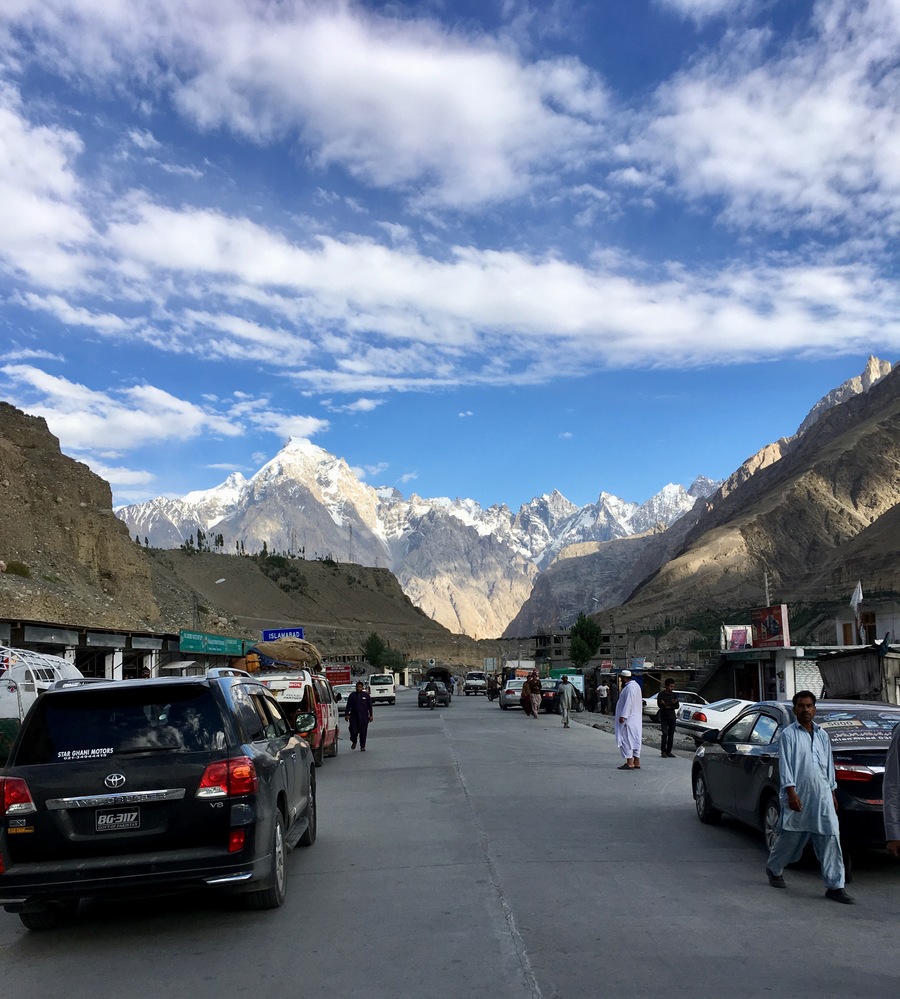
Downtown Sost
A popular trip for many Pakistanis is to use Sost, the last main town on the Pakistani side, as a staging post. Early in the morning travellers set out for the border, passing at least three checkpoints manned by the Pakistan Army or the border force. At one of these, near the riverside settlement called Dih, you will be asked to pay a fee to enter the Khunjerab National Park; it’s US$8 for foreigners, Rs. 20 for Pakistanis.
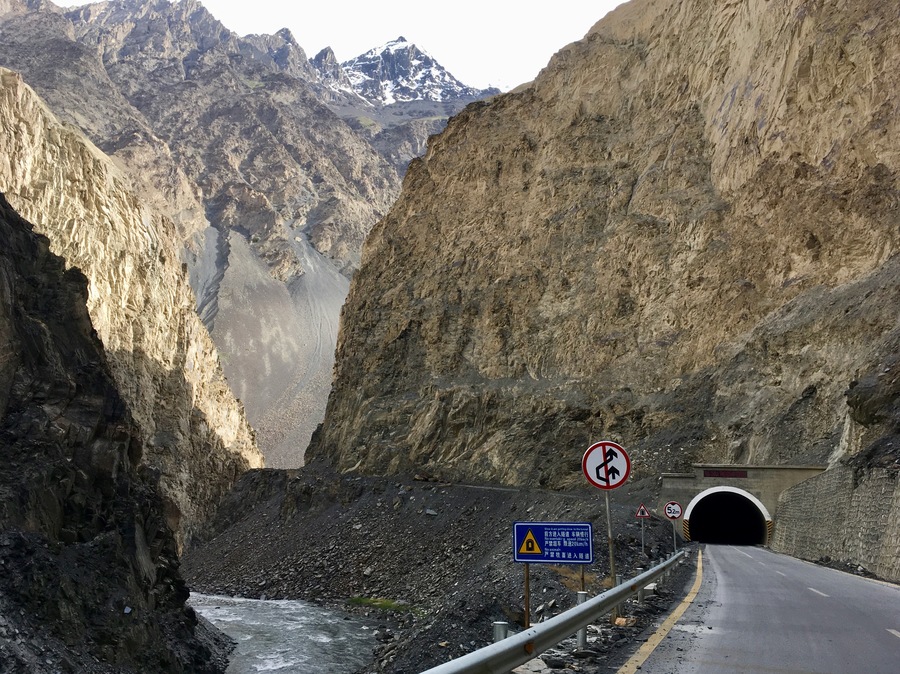
From Sost to Dih it takes one hour, from Dih to the border it’s a spectacular 90 minute drive through canyons and frozen paddocks of the Khunjerab National Park. On the way keep your eyes peeled for a snow leopard or a marco polo sheep, both native to the region, although sightings are famously rare.
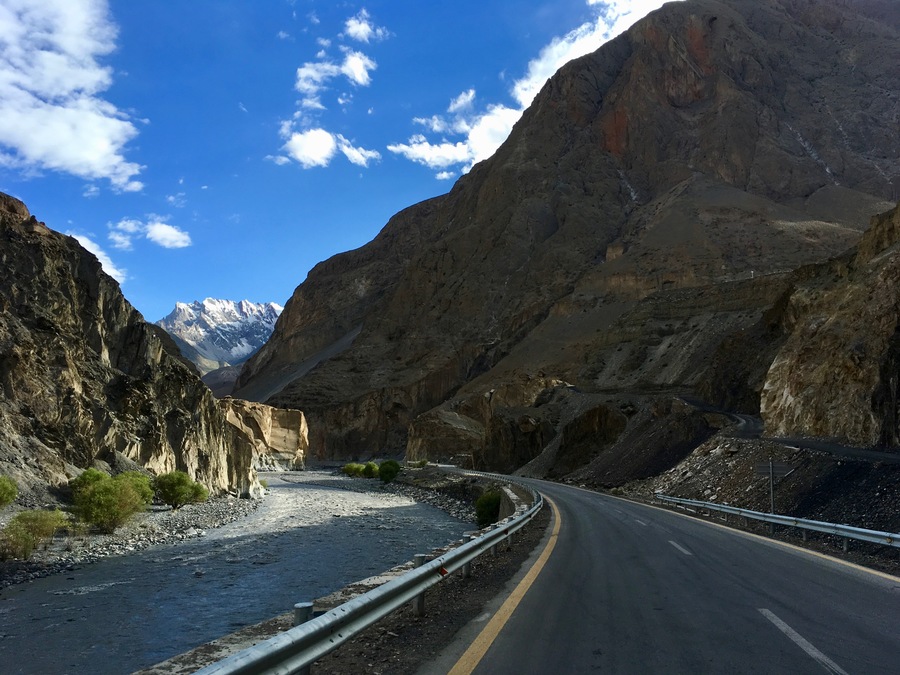
Once the valley opens out a little it begins to switchback, climbing the final hill towards the border. Around here you might spy some shepherds with their flocks, or a tent belonging to some intrepid souls; the valleys to the east and west are something of a final frontier for hikers.
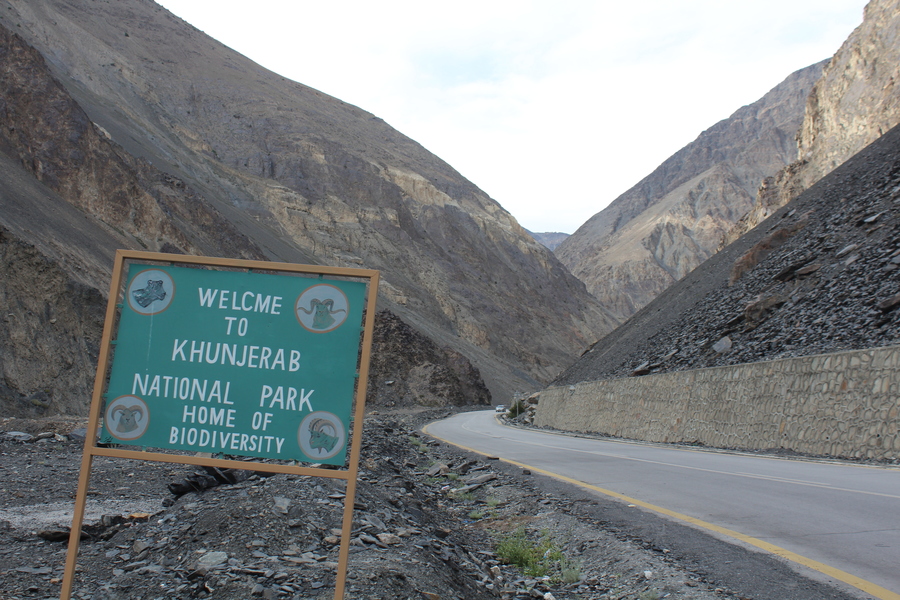
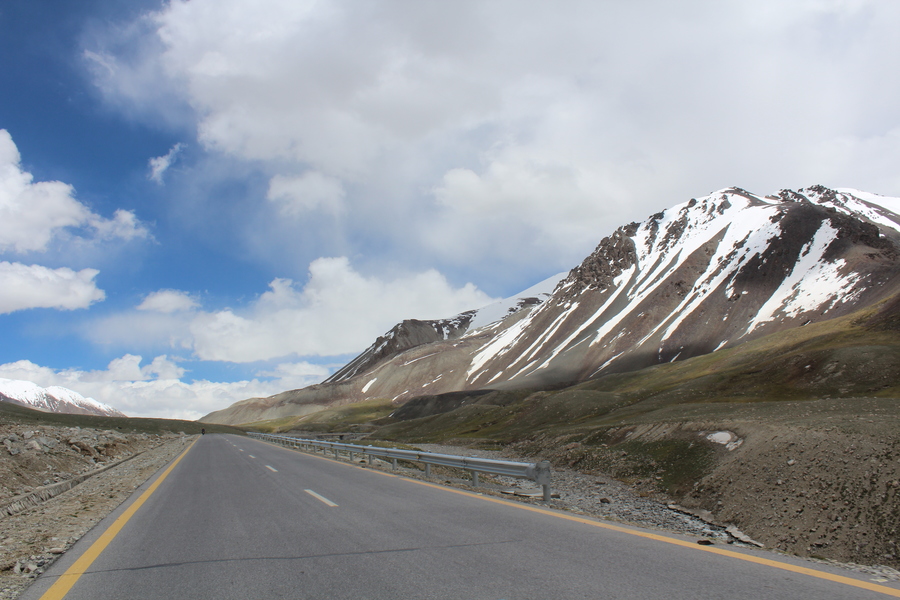
Approaching the Khunjerab Pass
Arriving at the top you’ll either be escorted by police towards the arch to cross the border, or corralled by the army into a parking zone for day trippers. Don’t forget to catch a snap of the world’s highest ATM, and the obligatory selfie at the border post. While it’s usually a jovial atmosphere, don’t forget it’s still a border crossing and the guards have a job to do – so don’t try to throw anything across the border, or take a picture where you’ve been told not to.
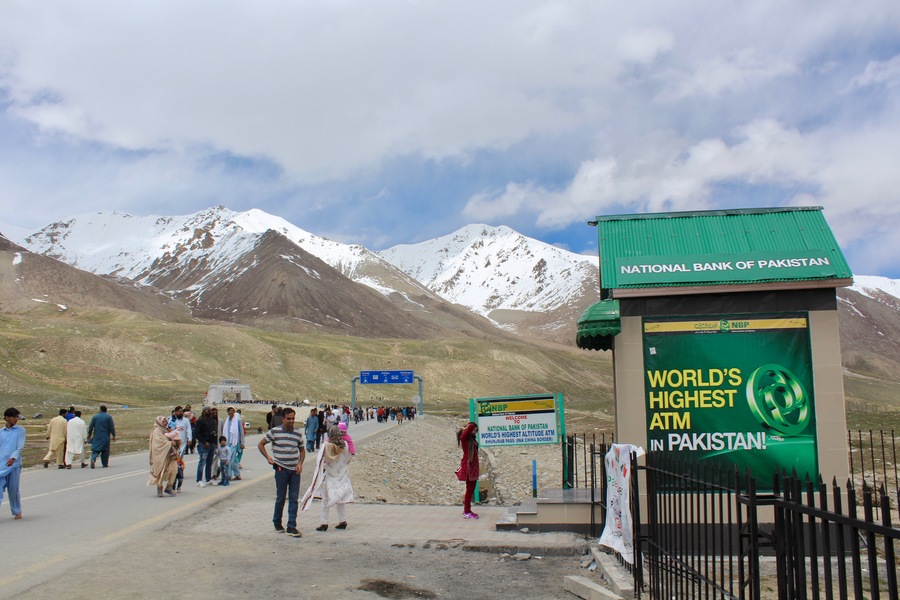
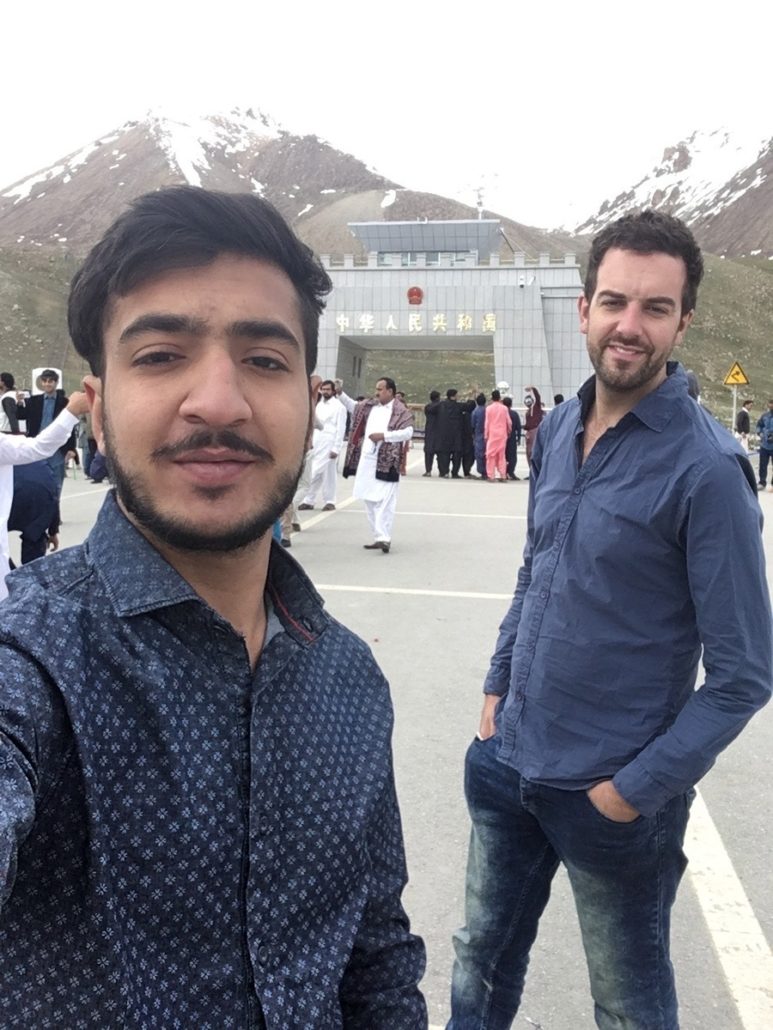
Need to know;
- The final climb is steep and there’s not much oxygen; the engines of cars and bikes WILL be affected, so go slow, be patient and be prepared for any eventuality.
- It’s cold and the air is thin; come prepared for snowy conditions (even in the middle of summer) and don’t overexert yourself once you are at the pass.
- Carry all documents with you – passport, copies of your passport and visa, bike or car documents if applicable
- Carry emergency supplies of cash, water and food – the area is well travelled, but it’s still a cold and lonely place to get stuck while waiting for the next passing car.
- Do not attempt at night time. Start as early as possible to allow for any delays; a round trip from Sost should take about 5 or 6 hours (2.5 hours China-bound, up to an hour at the border, then 1.5 hours on the downhill return). Journey times vary drastically depending on weather conditions, road conditions, traffic and how well your vehicle copes with the lack of oxygen.
- The road disappears under drifts of snow every winter, and is therefore impassable. Officially the road is closed from October 31 to May 1, but these dates are somewhat flexible; a warm spring may see parts of the highway (if not the border) open in early to mid-April, and a warm winter recently kept things open until mid-November. Alternatively, an unseasonally cold winter could extend the winter closure by up to a month either side.
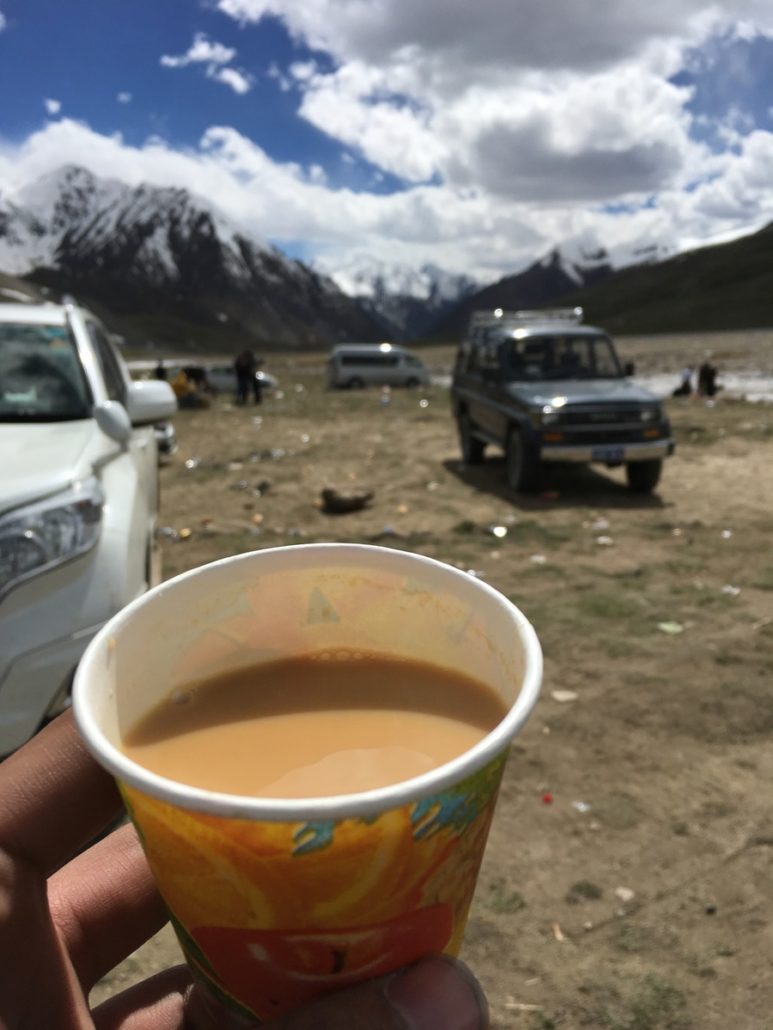
Chai and China

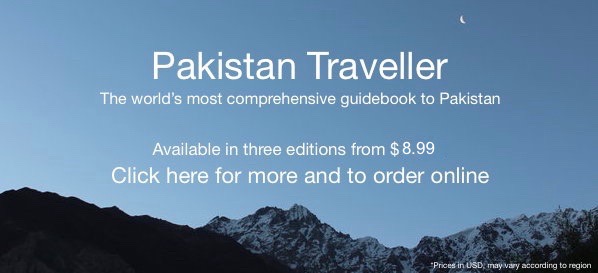



Great photos. An amazing and unpredictable journey, there are oxygen masks in the waiting area on the Chinese side for the lengthy delays that occur there as coach loads of passengers are carefully screened. One of the best border crossings in the world!
Definitely a dramatic way to make an entrance! Thanks for reading, Simon 🙂
what a monumental incredible location! Love the ATM – what a bizarre boast! I didnt realise Pakistan to Kashgar was only 420km either! the world is amazing!
Lol I know right?! Why an ATM? Why not?!